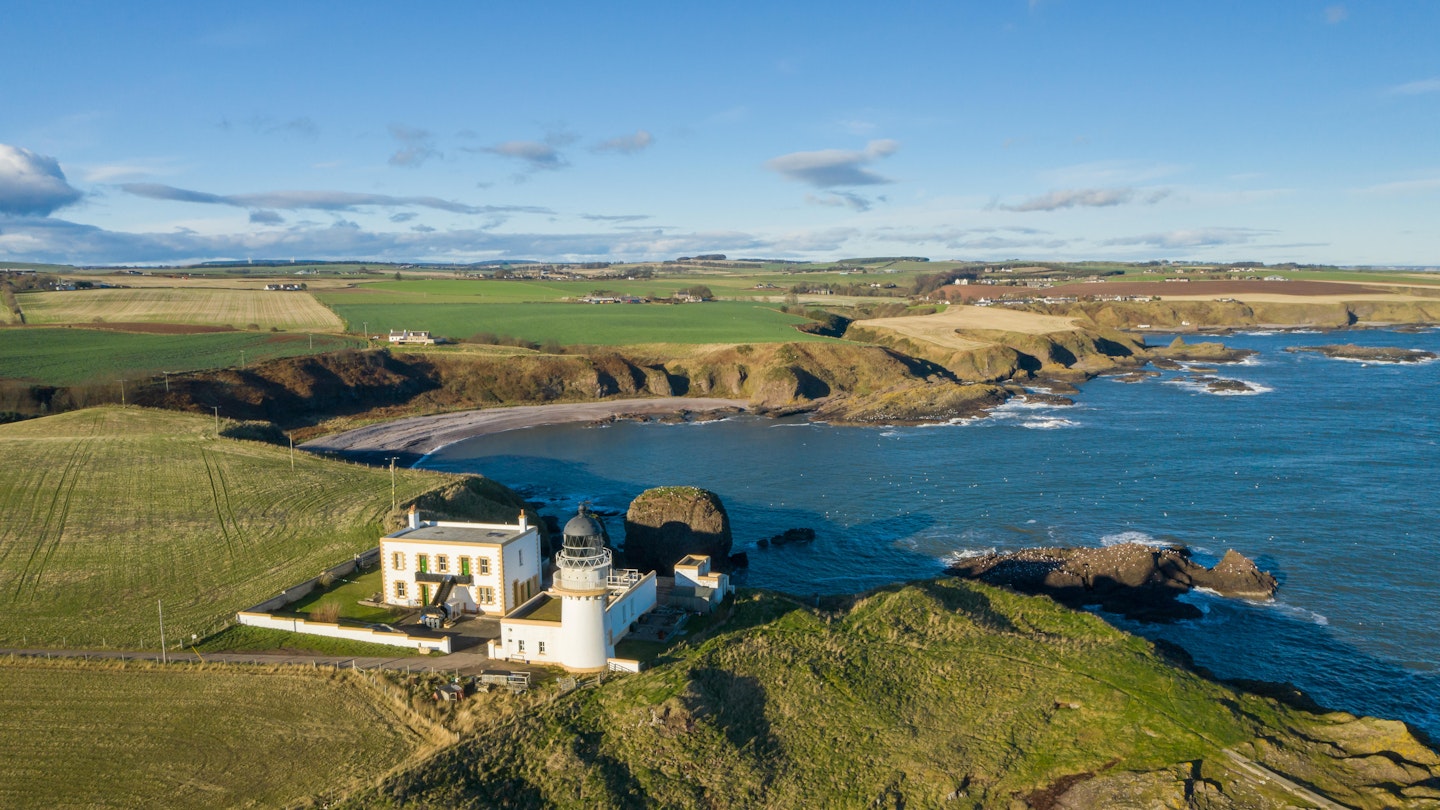Lighthouses have dotted our skyline, shining a light to keep safe sailors, fishermen and all who travel our seas for centuries. Iconic buildings in their own right, they’re often found in some of the most remarkable and remote corners of the land.
But since lighthouses were automated in the Eighties and Nineties, meaning they no longer required keepers to manually look after them, some have fallen into disrepair. Recently two in Harwich were even placed on Historic England’s At Risk Register. What’s more, as we lose more of the men and women who were once lighthouse keepers as the years pass, there’s the worry that their tall tales about lighthouse life and how they kept the seas safe might soon be lost. But not if a special group called the Association of Lighthouse Keepers (ALK) have anything to do with it!
While the ALK has been around some 40 years its members are now on more of a crusade than ever to make sure the British public want to care for and cherish their lighthouses. They do this first of all by giving people the opportunity to get inside some of the most amazing lighthouses in the UK. This way people can learn the incredible stories of how lighthouses saved lives, discover how they work and hopefully come to care for them. They also educate school children about the important role lighthouses have always played in our maritime heritage.
Finally, the group bring together lighthouse keepers of the past, encouraging them to share their incredible stories of shipwrecks and storms, saving lives and spotting wildlife so their tales are not lost forever.
David Taylor who is the secretary for the ALK says this is all vital work. “You’ve only got to read the history of Eddystone Lighthouse off Plymouth, which was built after many lives were lost on the perilous Eddystone Rocks to realise what an important role lighthouses have played,” says David.
“It’s for this reason that the lighthouse keepers themselves are also so interesting because they were essentially smartly dressed mechanics who were willing to put up with incredibly adverse situations, often in remote locations, to make sure the lighthouse lamp shone and sailors were safe.”
Today all working lighthouses are managed by a board who intermittently send engineers to keep them going. While this is obviously incredibly important – even in these days where sailors have GPS to guide them away from danger - David points out it’s just as important to preserve the lighthouse buildings that no longer have a shining light.
“Sailors and fishermen say to us just seeing a lighthouse in the daytime, even without a light, helps them know where they are, while these buildings are also part of our heritage.”
Most non-working lighthouses are today privately owned and while there is sadly no mandate to ensure these buildings are properly preserved and cared for, luckily many have lighthouse-loving owners like Rohan Beyts.
Rohan first came across Tod Head lighthouse (pictured as our main image of this article) in Aberdeenshire as a child when she holidayed there with her family. Many years later when the lighthouse was decommissioned, its lamp removed and it went on the housing market, she knew she had to team up with her family to buy it. It took years of renovation to change the engine room and workroom into a proper home but she kept most of the lighthouse features the same, making the lighthouse tower a place to escape with a pot of coffee, look out across the sea and watch the bounty of local birdlife.
Being so remote, life isn’t always easy here. It’s a two-mile walk to the nearest bus stop and when winter comes, it’s not uncommon to get totally cut-off with snow, something that once happened just as she needed an operation, making for a rather hairy trip to and from the hospital. But nevertheless, she says being custodian of such an important building is a great privilege.
“I’ve been researching the history of the lighthouse and uncovered some amazing stories, from when a previous lighthouse keeper saved a diver off the rocks to the keeper who lost his life here to a freak wave,” she says.
“I feel very responsible to live here but also cannot imagine ever living anywhere else now.”
As for the future, both David and Rohan hope lighthouses will always be part of our landscape and encourage people to learn more about the ones near them or in the places they visit to discover how truly special they are.
Illuminating lighthouse facts
Britain’s oldest lighthouse building is in the grounds of Dover Castle. It was built around 45-50 AD at the request of Roman Emperor Caligula.

The world’s tallest lighthouse is the Jeddah lighthouse in Saudi Arabia standing at 436 feet tall.

In 1900 the three keepers of the lighthouse on the uninhabited island of Eilean Mor in the Outer Hebrides mysteriously disappeared. Later investigation of their logs revealed a brutal storm had been overwhelming the island for several days although strangely occupants of the neighbouring island with a clear view of the lighthouse reported perfectly calm weather. To this day to mystery is unsolved.
To find out more about the ALK and becoming a member, visit alk.org.uk
